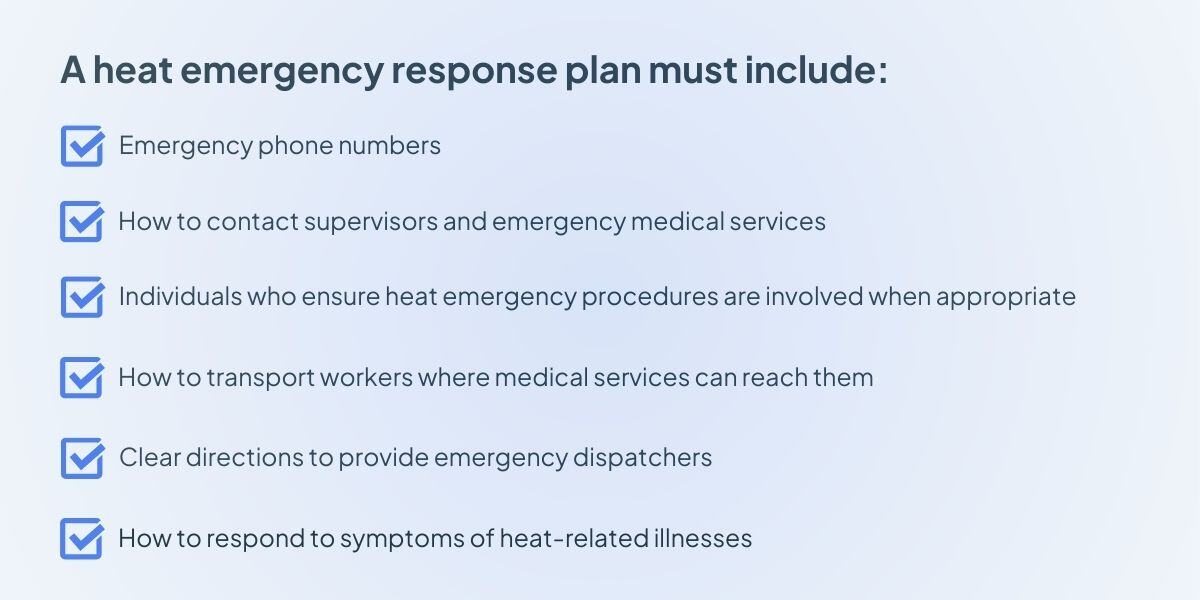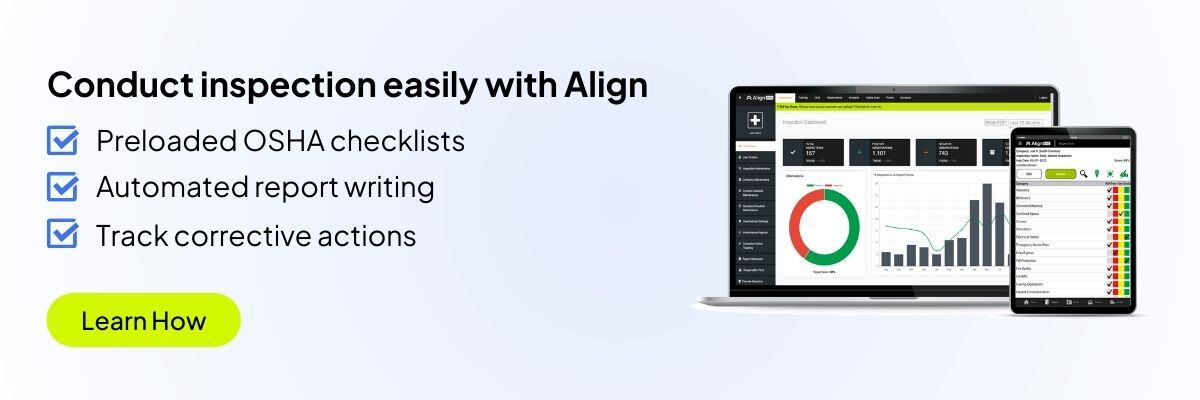-

Align | July 8, 2023
OSHA's New Heat Safety Rule
As the U.S. faces record-breaking temperatures this summer, there are growing concerns around heat-related risks for workers. According to the Assistant Secretary for Occupational Safety and Health, “Workers all over the country are passing out, suffering heat stroke, and dying from heat exposure from just doing their jobs, and something must be done to protect them.”
That is why the Department of Labor has stepped up to protect workers from heat risks with a newly proposed rule. The establishment of this new rule comes as no surprise to safety professionals. OSHA began its rule-making process in 2021 and, as of June 2024, had conducted 5,038 Heat NEP Federal Inspections. This new rule will require businesses to:
- Develop a worksite heat injury and illness prevention plan
- Provide workers access to water, shade, and regular breaks
- Train employees on heat protocols
- Keep a record and report on heat incidents
Once the rule is published in the Federal Register, the public is encouraged to provide feedback within 120 days through http://www.regulations.gov. In this article, we’ll break down the expectations of the rule so you can proactively prepare before temperatures get dangerously hot.
Who will be impacted by OSHA's heat safety rule?
This new rule is expected to impact all indoor and outdoor work affected by heat at or above 80°F except for:
- Firefighting
- Search and Rescue
- Emergency Response Crew
- Telework
- Sedentary indoor work
- Work performed indoors or in vehicles with temperatures below 80°F
- Workers exposed to high heat for 15 minutes or less in a 60-minute period
- Work with no exposure to heat
What will OSHA's heat safety rule require from employees?
The heat safety rule has several requirements that must be met. First, because each industry faces different hazards, employers must conduct a heat hazard identification assessment that identifies potential long-term and immediate risks.
Risks Based on Heat Index Levels
|
Caution 80-90°F |
Extreme Caution 90-103 °F |
Danger 103-125°F |
Extreme Danger 125 °F or higher |
Risk of fatigue |
Risk of heat stroke, heat cramps, or heat exhaustion |
Heat cramps or heat exhaustion is likely |
Heat stroke is likely |
(Source: NOAA)
Based on their findings, employers must develop a Heat Illness and Injury Prevention Plan in collaboration with non-managerial employees. The plan should include emergency response protocols and made accessible to workers in a language they understand. All workers and supervisors must be trained on the plan and taught how to spot early signs of heat-related illness.

OSHA's heat safety rules will also mandate several preventative measures be taken on work sites, including:
- Availability of cool drinking water: Employers must ensure that water is readily available and encourage workers to stay hydrated
- Scheduled rest breaks: The frequency and duration of breaks should increase with rising temperatures
- Cool rest areas: Shaded or air-conditioned rest areas must be provided to workers to take breaks and recover from the heat
- Acclimatization program: New or returning workers should be gradually introduced to hot working conditions to build up heat tolerance safely
- Regular communication: Ensure a two-way communication system between workers and supervisors
Lastly, to ensure the effectiveness of the heat safety plan, employers must conduct regular audits and maintain an incident reporting process for all heat-related illnesses and near-misses. This process should include:
- Regular Safety Audits: Conduct periodic audits to evaluate the effectiveness of heat safety measures and identify areas for improvement.
- Incident Reporting: Implement a system for reporting heat-related incidents and near-misses. This data should be analyzed to identify trends and prevent future incidents.
As temperatures rise, keeping crews safe becomes a bigger job. Fortunately, it's not too hard for businesses to identify which employees are at risk of heat illness, what the specific hazards are, and how to mitigate them – as well as improve compliance and avoid costly fines – by following the recommendations outlined by OSHA in this guide. High-temperature work environments don't need to be inherently unsafe. To learn more about how to keep your workers cool and incident-free, check out our Ultimate Guide to Construction Heat Safety or chat with one of our safety experts today.
About Align Technologies
At Align Technologies, we make construction safe, productive, and profitable. As the construction industry's first and most comprehensive operations management platform, Align Technologies’ suite of powerful tools delivers operational visibility and control that drives results. Formed in 2024, Align Technologies is powered by three innovative market leaders: ToolWatch construction management software, Safety Reports mobile safety and compliance, and busybusy time tracking.
